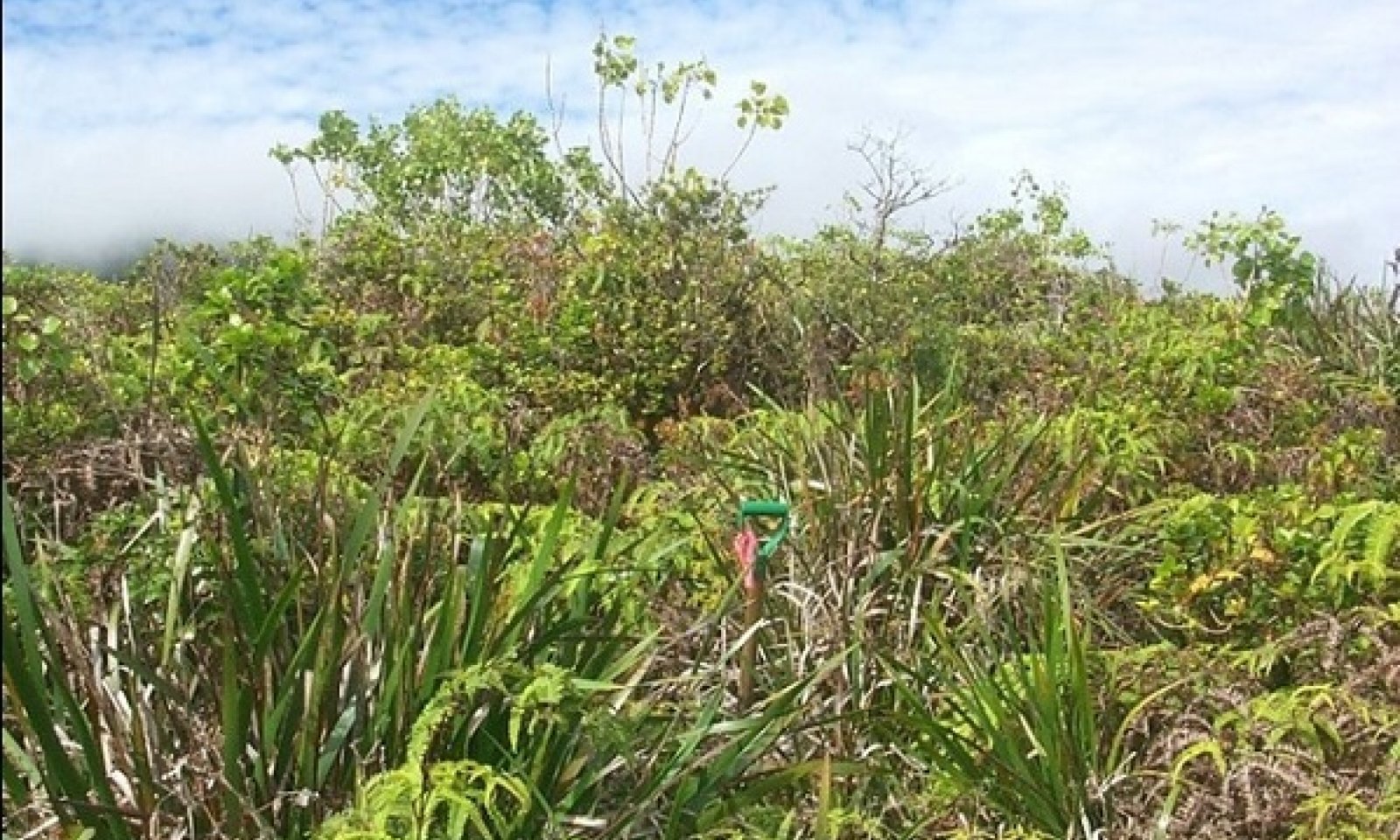

Natural Resources
Conservation Service
Ecological site VX164X01X501
Sphagnum Peat Dwarf Forest
Accessed: 11/21/2024
General information
Provisional. A provisional ecological site description has undergone quality control and quality assurance review. It contains a working state and transition model and enough information to identify the ecological site.
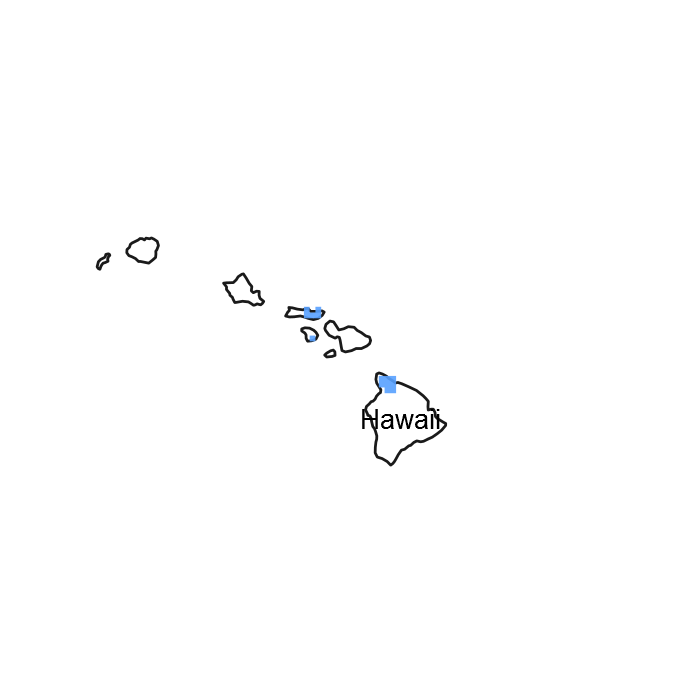
Figure 1. Mapped extent
Areas shown in blue indicate the maximum mapped extent of this ecological site. Other ecological sites likely occur within the highlighted areas. It is also possible for this ecological site to occur outside of highlighted areas if detailed soil survey has not been completed or recently updated.
MLRA notes
Major Land Resource Area (MLRA): 164X–Humid and Very Humid Steep and Very Steep Mountain Slopes
This MLRA occurs in the State of Hawaii on the islands of Hawaii, Maui, Molokai, Oahu, and Kauai. It consists primarily of deeply dissected mountainous areas. Elevation ranges from sea level to 7,000 feet (0 to 2100 meters). Topography is mostly steep, with ridges, gulches, and canyons, as well as areas of plateau. Underlying geology is fractured, basic, igneous rock (mostly basalt) that is slightly to highly weathered. Over this are found deposits of local volcanic ash, tropospheric dust from Asia, and/or organic deposits. Climate is mostly wet tropical. Average annual precipitation typically ranges from 75 to 250 inches (1875 to 6250 millimeters), with extremes of 30 to 450 inches (750 to 11,250 millimeters). Rainfall is well distributed throughout the year with and enhanced rainy season from November through April. Fog drip can add significant amounts of water to the soil. Average annual temperatures range from 53 to 75 degrees F (12 to 24 degrees C), with very little seasonal variation. Soils are mostly Inceptisols, Andisols, and Histosols with isothermic or isomesic soil temperature regimes. Native vegetation consists of moderate stature rainforests and dwarf forests.
Classification relationships
This ecological site occurs within Major Land Resource Area (MLRA) 164 - Humid and Very Humid Steep and Very Steep Mountain Slopes.
Ecological site concept
This ecological site is a very wet, boggy dwarf forest that exists on top of Kohala Mountain. The area is owned by the State of Hawaii. No public roads provide access to this ecological site.
This ecological site, or related ecological sites, also may occur on Maui, Molokai, Oahu, and Kauai; field work has yet to be completed. Based on existing information, soil and vegetation differences may result in related ecological sites on the other islands.
The central concept of the Sphagnum Peat Dwarf Forest is of poorly drained, deep soils formed in deposits of volcanic ash that are covered with a layer of peat. Lava flows range from 120,000 to 500,000 years old. Annual air temperatures and rainfall interacting with a dense ironstone horizon create warm (isothermic), water saturated and anaerobic (aquic) soil conditions. These soils support a dwarf forest with an overstory of ohia lehua (Metrosideros polymorpha) and olapa (Cheirodendron trigynum) from 3 to 16 feet (1 to 5 meters) tall and a very diverse understory of trees, shrubs, tree ferns, forbs, grasses, sedges, and ferns. There is usually a thick growth of mosses, liverworts, and small ferns on tree trunks. The ground is covered with a thick layer of sphagnum moss in which the plant species are rooted.
Associated sites
| VX164X01X500 |
Volcanic Ash Forest F164XY500 Volcanic Ash Forest is a medium stature rain forest that adjoins F164XY501 at lower, drier elevations. |
|---|
Table 1. Dominant plant species
| Tree |
(1) Metrosideros polymorpha |
|---|---|
| Shrub |
(1) Vaccinium calycinum |
| Herbaceous |
Not specified |
Legacy ID
F164XY501HI
Physiographic features
This ecological site occurs on volcanic ash flows deposited over lava flows on sloping mountainsides of shield volcanoes, on interfluves of steep dissected uplands on middle elevation, windward mountain slopes. Volcanic ash flows range are shallow on the underlying lava.
Table 2. Representative physiographic features
| Landforms |
(1)
Shield volcano
(2) Ash flow (3) Lava flow |
|---|---|
| Flooding frequency | None |
| Ponding frequency | None |
| Elevation | 457 – 1,341 m |
| Slope | 3 – 50% |
| Water table depth | 0 – 41 cm |
| Aspect | NE |
Climatic features
There are no climate stations near this ecological site with complete data sets suitable for automatically filling the data boxes and charts below.
The estimates in the following text are based on modeled climate maps and incomplete and/or historic data sets from multiple stations compiled by NRCS Hawaii Soil Survey.
Average annual precipitation ranges from 75 to 400 inches (1905 to 10,160 millimeters). Rainfall occurs throughout the year, with the heaviest precipitation occurring from October through April. Landscapes are shrouded in fog or overcast during much of the day throughout the year, which reduces evapotranspiration and adds additional moisture from condensation of fog on vegetation. Mean annual soil temperature ranges from 57 to 61 degrees F (14 to 16 degrees C). Frost free and freeze free periods are 365 days per year.
Table 3. Representative climatic features
| Frost-free period (average) | 0 days |
|---|---|
| Freeze-free period (average) | 0 days |
| Precipitation total (average) | 0 mm |
Figure 2. Monthly average minimum and maximum temperature
Figure 3. Annual precipitation pattern
Figure 4. Annual average temperature pattern
Influencing water features
Streams exist in shallow to deep gulches. Vegetation and soils immediately next to the streams vary little from those of the rest of the ecological site.
Soil features
This ecological site is correlated only with Amalu peat. This soil series formed in organic matter over basic volcanic ash and tropospheric dust over residuum weathered from basalt. Landscape surfaces in this ecological site are the oldest on the Island of Hawaii (120,000 to 500,000 years old). Soil temperature regimes are isomesic. Soil moisture regimes are aquic, which is a reducing regime in a soil that is virtually
free of dissolved oxygen because it is saturated by water.
The organic peat surface horizon is typically about 8 inches (20 centimeters) thick. Directly beneath it is a gleyed (gray, reduced) mineral horizon. Plant roots appear to be primarily, and maybe exclusively, in the surface peat horizon.
Soils have a surface layer of live and decomposed sphagnum moss of variable thickness that typically is about 8 inches (20 cm) thick. Most live plant roots are found in this horizon. Below the sphagnum horizon is a layer of gleyed, anaerobic mineral soil. Beneath this layer is an ironstone pan that perches water and acts as a barrier to root penetration.
Table 4. Representative soil features
| Parent material |
(1)
Mossy organic material
–
basalt
|
|---|---|
| Surface texture |
(1) Peaty clay (2) Mucky silty clay loam |
| Family particle size |
(1) Clayey |
| Drainage class | Poorly drained |
| Permeability class | Slow |
| Soil depth | 30 – 58 cm |
| Surface fragment cover <=3" | 0% |
| Surface fragment cover >3" | 0% |
| Available water capacity (0-101.6cm) |
15.24 – 22.86 cm |
| Calcium carbonate equivalent (0-101.6cm) |
0% |
| Electrical conductivity (0-101.6cm) |
0 – 2 mmhos/cm |
| Sodium adsorption ratio (0-101.6cm) |
0 |
| Soil reaction (1:1 water) (0-101.6cm) |
3.9 – 5.2 |
| Subsurface fragment volume <=3" (Depth not specified) |
0% |
| Subsurface fragment volume >3" (Depth not specified) |
35 – 60% |
Ecological dynamics
The information in this ecological site description (ESD), including the state-and-transition model (STM), was developed using archaeological and historical data, professional experience, and scientific studies. The information is representative of a complex set of plant communities. Not all scenarios or plants are included. Key indicator plants, animals, and ecological processes are described to inform land management decisions.
Human-related disturbances have been much more important than natural disturbances in this ecological site since the arrival of Polynesians and, later, Europeans. This is reflected in the State and Transition Model Diagram.
Natural Disturbances
This ecological site has not been affected by local volcanic activity for hundreds of thousands of years. It is far enough from more recently active volcanoes on the island to have avoided heavy falls of volcanic ash within that time. Rainfall is very high, so wildfires do not occur. Vegetation is low in stature, so windfall is not an important factor.
Human Disturbances
Humans arrived in the Hawaiian Islands 1200 to 1500 years ago. Their population gradually increased so that by 1600 AD at least 80% of all the lands in Hawaii below about 1500 feet (roughly 500 meters) in elevation had been extensively altered by humans (Kirch 1982). This ecological site occurs well above that elevation. However, this ecological site affected by factors connected with the arrival of humans (Athens 1997).
The Polynesians introduced dogs, Pacific rats, and small pigs to the islands. Cattle, sheep, horses, goats, and larger European pigs were introduced in the final decades of the 18th century. These animals ranged free on the islands, becoming very numerous and destructive by the early decades of the 19th century (Henke 1929). The most destructive introduced animals in this relatively remote ecological site have been feral pigs and cattle.
After the arrival of Europeans, documentary evidence attests to accelerated and extensive deforestation, erosion, siltation, and changes in local weather patterns (Kirch 1983) due to more intensive land use, modern tools, and introduction of more plant, animal, and microbe species.
Through the 20th and into the 21st centuries, increases in human populations with attendant land development, as well as accelerated introduction of non-native mammals, birds, reptiles, amphibians, invertebrates, plants, and microorganisms, have brought about dramatic changes to wild ecosystems in Hawaii. Most of the original forest area of this ecological site remains fairly intact. However, the native plant community in many areas has been highly disturbed and in some places destroyed due to clearing, feral ungulate foraging, and invasion by introduced species. Introduced plant species are capable of completely and permanently replacing native vegetation.
State and transition model
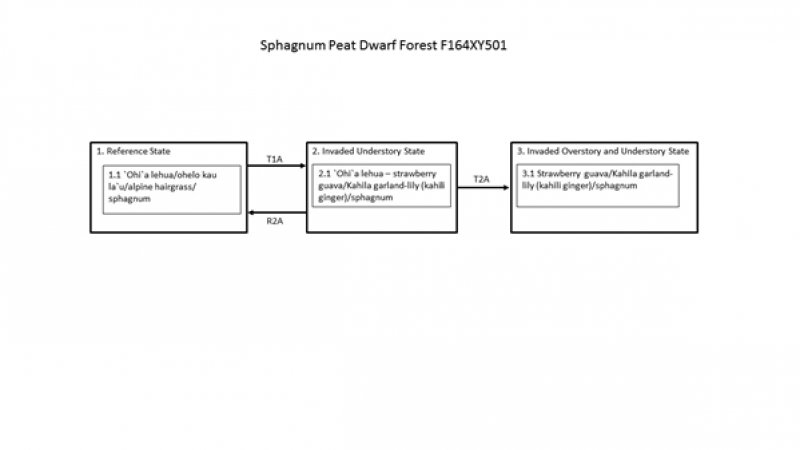
Figure 5. State and Transition Diagram F164XY501
More interactive model formats are also available.
View Interactive Models
More interactive model formats are also available.
View Interactive Models
Click on state and transition labels to scroll to the respective text
State 1 submodel, plant communities
State 2 submodel, plant communities
State 3 submodel, plant communities
State 1
Reference State
The Reference State consists of one community phase. Under a regime of natural disturbances, this community has probably been stable through post-glacial time frames. State 1 will transition into State 2 Invaded Understory by clearing and abandonment or by gradual weed invasion, which is exacerbated by feral ungulates.
Community 1.1
`Ohi`a lehua/ohelo kau la`u/alpine hairgrass/sphagnum

Figure 6. Reference community state. 11/1/06 D Clausnitzer MU426
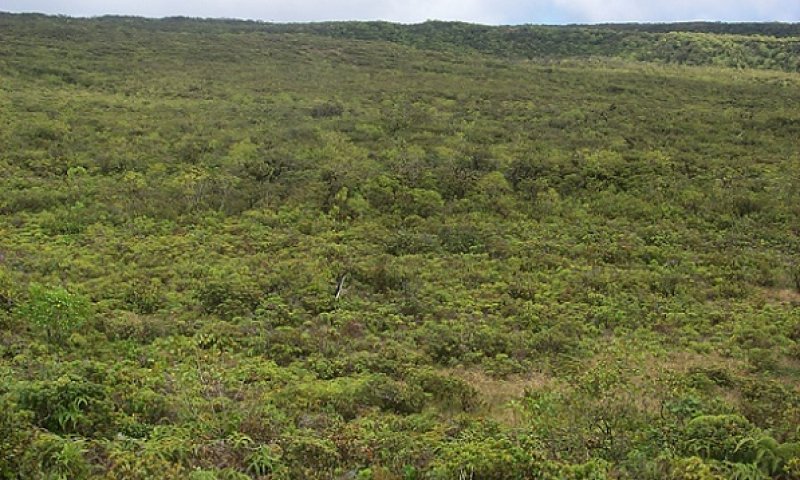
Figure 7. Landscape view. 11/3/06 D Clausnitzer generic photo
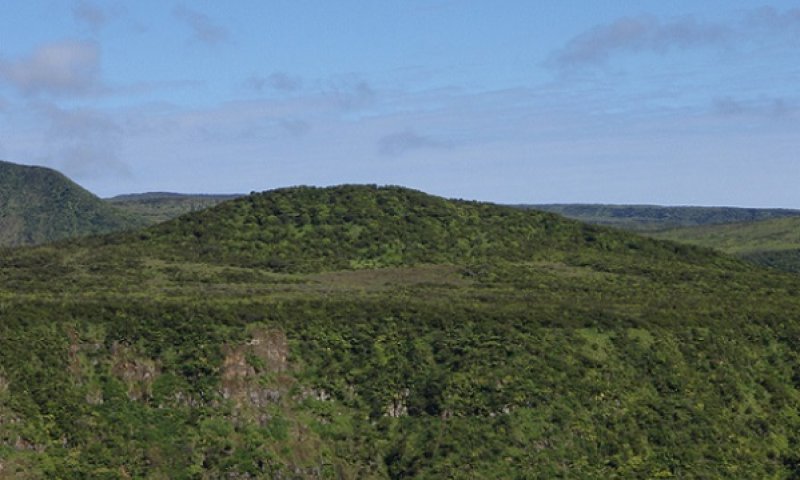
Figure 8. Plateau side view. 9/11/08 D Clausnitzer generic photo
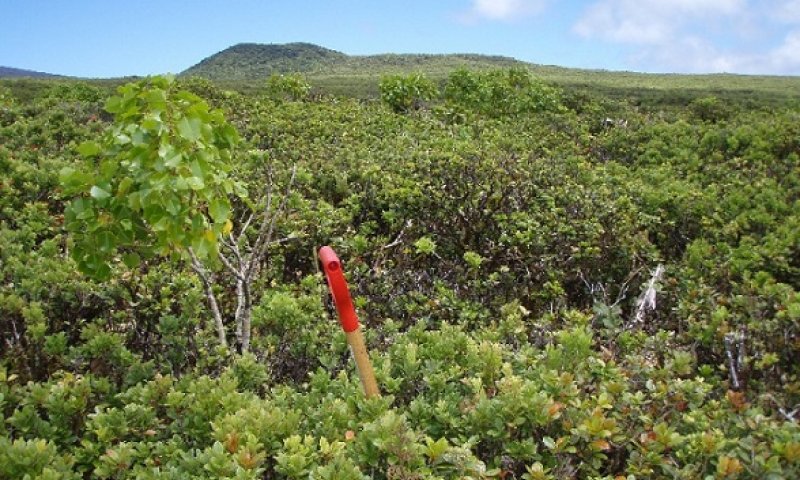
Figure 9. Typical canopy height. 11/1/06 D Clausnitzer MU426
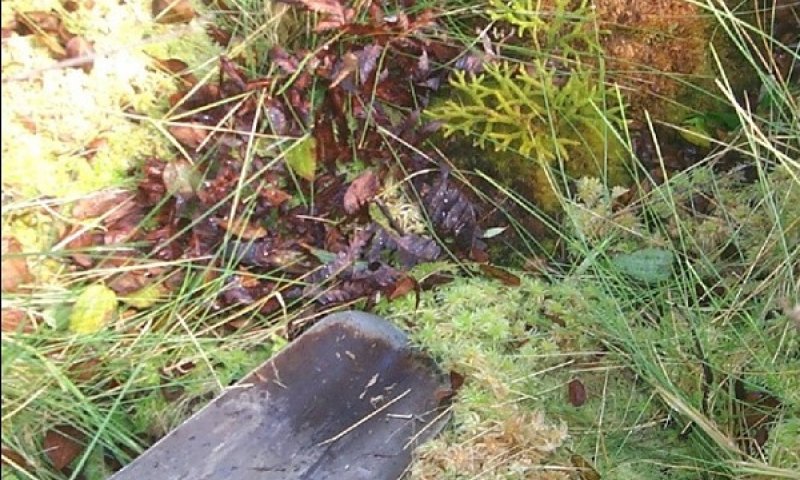
Figure 10. Closeup of sphagnum surface. 11/8/06 D Clausnitzer MU426

Figure 11. Closeup of sphagnum surface. 4/23/08 D Clausnitzer MU426
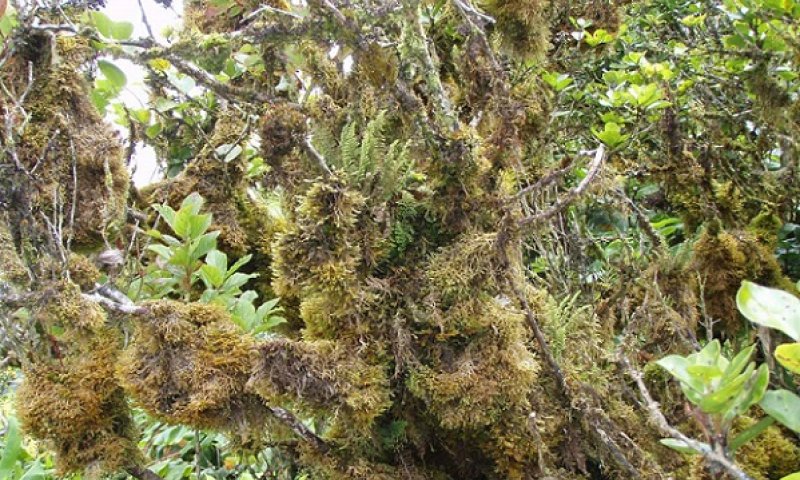
Figure 12. Heavy moss growth on tree trunk. D Clausnitzer generic photo
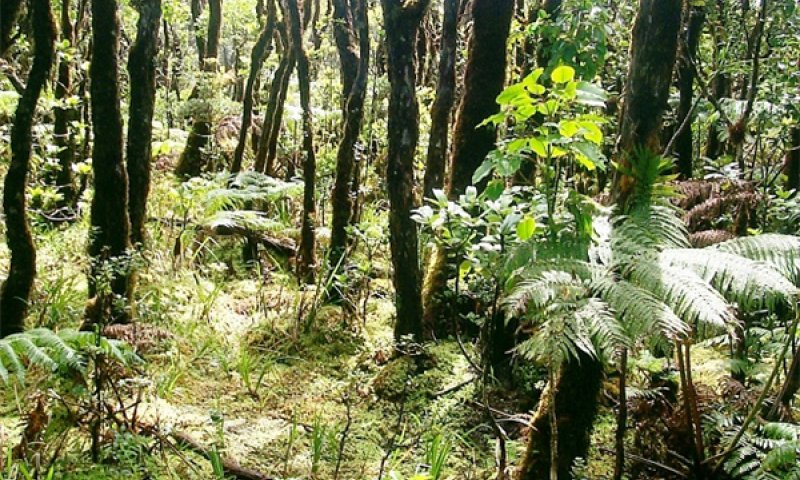
Figure 13. Site with taller trees. 8/8/06 D Clausnitzer MU426

Figure 14. Transition upslope to F164XY500. 8/8/06 D Clausnitzer MU426
This community phase is a wetland with low stature trees, scattered tree ferns, and diverse shrubs, forbs, vines, grasses, and sedges. The soil surface is covered by a deep (1 to 2 feet or 30 to 45 centimeters) layer of sphagnum moss. The tallest plants typically range from 4 to 15 feet (1.3 to 4.6 meters) tall. In some areas, the overstory may be as short as 3 feet (1 meter) or as tall as 30 feet (9 meters). Trunks and branches of trees and shrub are covered by a heavy growth of mosses, liverworts, and small ferns. Most, if not all, the species occurring in the Reference State are typical of other Hawaiian moist forests.
Forest overstory. The tallest species are dwarfed ohia lehua (Metrosideros polymorpha) and olapa (Cheirodendron trigynum).
Forest understory. The understory is very diverse. Many typical Hawaiian forest tree species are found here, but are dwarfed in stature. Three tree fern species (Cibotium glaucum, C. menziesii, and C. chamissoi) are common but not abundant. The most common shrub is ohelo kau lau (Vaccinium calycinum). Uluhe (Dicranopteris linearis) forms small thickets or creeps between other vegetation. Small ferns are very diverse. Alpine hairgrass (Deschampsia nubigena) is common on the moss surface.
Table 5. Soil surface cover
| Tree basal cover | 0.0-0.5% |
|---|---|
| Shrub/vine/liana basal cover | 0.0-0.5% |
| Grass/grasslike basal cover | 0.0-0.5% |
| Forb basal cover | 0% |
| Non-vascular plants | 90-95% |
| Biological crusts | 0% |
| Litter | 5-10% |
| Surface fragments >0.25" and <=3" | 0% |
| Surface fragments >3" | 0% |
| Bedrock | 0% |
| Water | 0% |
| Bare ground | 0% |
Table 6. Woody ground cover
| Downed wood, fine-small (<0.40" diameter; 1-hour fuels) | – |
|---|---|
| Downed wood, fine-medium (0.40-0.99" diameter; 10-hour fuels) | – |
| Downed wood, fine-large (1.00-2.99" diameter; 100-hour fuels) | 0% |
| Downed wood, coarse-small (3.00-8.99" diameter; 1,000-hour fuels) | 0% |
| Downed wood, coarse-large (>9.00" diameter; 10,000-hour fuels) | – |
| Tree snags** (hard***) | – |
| Tree snags** (soft***) | – |
| Tree snag count** (hard***) | |
| Tree snag count** (hard***) |
* Decomposition Classes: N - no or little integration with the soil surface; I - partial to nearly full integration with the soil surface.
** >10.16cm diameter at 1.3716m above ground and >1.8288m height--if less diameter OR height use applicable down wood type; for pinyon and juniper, use 0.3048m above ground.
*** Hard - tree is dead with most or all of bark intact; Soft - most of bark has sloughed off.
Table 7. Canopy structure (% cover)
| Height Above Ground (m) | Tree | Shrub/Vine | Grass/ Grasslike |
Forb |
|---|---|---|---|---|
| <0.15 | 0% | 0-1% | 0% | 1-2% |
| >0.15 <= 0.3 | 0-1% | 0-1% | 1-2% | 3-5% |
| >0.3 <= 0.6 | 1-1% | 0-1% | 2-3% | 3-5% |
| >0.6 <= 1.4 | 55-65% | 25-35% | 1-1% | 3-5% |
| >1.4 <= 4 | 14-25% | 0% | – | – |
| >4 <= 12 | 0-2% | – | – | – |
| >12 <= 24 | – | – | – | – |
| >24 <= 37 | – | – | – | – |
| >37 | – | – | – | – |
State 2
Invaded Understory State
This state consists of one community phase. Native plant abundance and diversity are lower than in the Reference state. Native species are unable to regenerate in this plant community and eventually die out. Some small native ferns persist on tree trunks and limbs. Ground cover of sphagnum moss is lower than in the Reference state. Where sphagnum cover is naturally shallow, digging and rooting by pigs removes the sphagnum cover completely, exposing the mineral soil beneath. These bare soil patches are easily invaded by introduced weed species.
Community 2.1
`Ohi`a lehua/strawberry guava/Kahila garland-lily (kahili ginger)/sphagnum
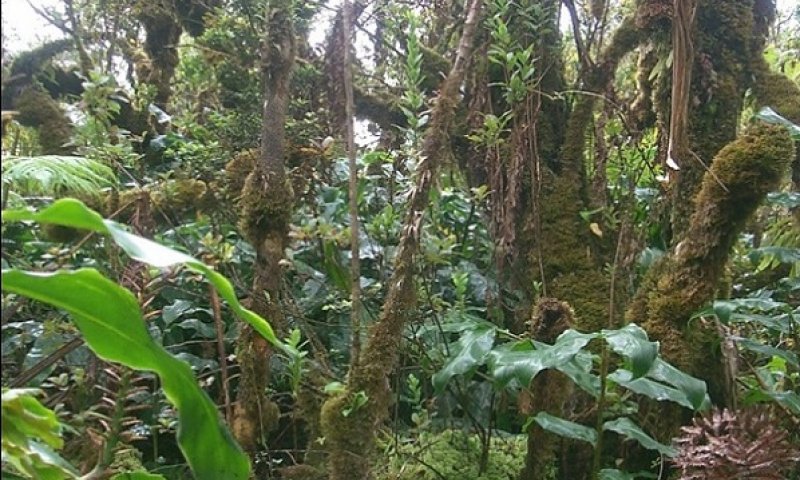
Figure 15. Understory invaded by kahili ginger. 11/8/06 D Clausnitzer MU426
This community phase has an intact or diminished overstory of native trees with a dense understory of native and introduced forbs, shrubs, ferns, grasses, and small trees.
Forest overstory. The overstory is still dominated by ohia lehua (Metrosideros polymorpha) and olapa (Cheirodendron trigynum).
Forest understory. Strawberry guava (Psidium cattleianum) is more abundant than native trees in the secondary canopy. Koster’s curse (Clidemia hirta) and cane tibouchina (Tibouchina herbacea) are common. Kahili ginger can be particularly abundant, forming a dense ground cover and filling the soil surface with its roots. Strawberry guava can emerge through dense ginger stands. Grass canopy cover has increased from 5% in the Reference state to about 20%, mostly of introduced species. Few to no seedlings and saplings of native tree and shrub species occur in this phase.
Table 8. Soil surface cover
| Tree basal cover | 0.0-0.5% |
|---|---|
| Shrub/vine/liana basal cover | 0.0-0.5% |
| Grass/grasslike basal cover | 1-2% |
| Forb basal cover | 25-35% |
| Non-vascular plants | 65-75% |
| Biological crusts | 0% |
| Litter | 5-10% |
| Surface fragments >0.25" and <=3" | 0% |
| Surface fragments >3" | 0% |
| Bedrock | 0% |
| Water | 0% |
| Bare ground | 5-10% |
Table 9. Woody ground cover
| Downed wood, fine-small (<0.40" diameter; 1-hour fuels) | – |
|---|---|
| Downed wood, fine-medium (0.40-0.99" diameter; 10-hour fuels) | – |
| Downed wood, fine-large (1.00-2.99" diameter; 100-hour fuels) | 0% |
| Downed wood, coarse-small (3.00-8.99" diameter; 1,000-hour fuels) | – |
| Downed wood, coarse-large (>9.00" diameter; 10,000-hour fuels) | – |
| Tree snags** (hard***) | – |
| Tree snags** (soft***) | – |
| Tree snag count** (hard***) | |
| Tree snag count** (hard***) |
* Decomposition Classes: N - no or little integration with the soil surface; I - partial to nearly full integration with the soil surface.
** >10.16cm diameter at 1.3716m above ground and >1.8288m height--if less diameter OR height use applicable down wood type; for pinyon and juniper, use 0.3048m above ground.
*** Hard - tree is dead with most or all of bark intact; Soft - most of bark has sloughed off.
Table 10. Canopy structure (% cover)
| Height Above Ground (m) | Tree | Shrub/Vine | Grass/ Grasslike |
Forb |
|---|---|---|---|---|
| <0.15 | 0% | 0% | 1-2% | 0-1% |
| >0.15 <= 0.3 | 0% | 0% | 10-15% | 2-3% |
| >0.3 <= 0.6 | 1-1% | 1-2% | 5-10% | 2-3% |
| >0.6 <= 1.4 | 3-5% | 5-15% | 3-5% | 25-50% |
| >1.4 <= 4 | 10-20% | 0% | – | – |
| >4 <= 12 | 0-1% | – | – | – |
| >12 <= 24 | – | – | – | – |
| >24 <= 37 | – | – | – | – |
| >37 | – | – | – | – |
State 3
Invaded Overstory and Understory State
This state contains one community phase. The vegetation consists almost entirely of introduced species. Restoration to State 1 Reference would be very difficult.
Community 3.1
Strawberry guava/Kahila garland-lily (kahili ginger)/sphagnum
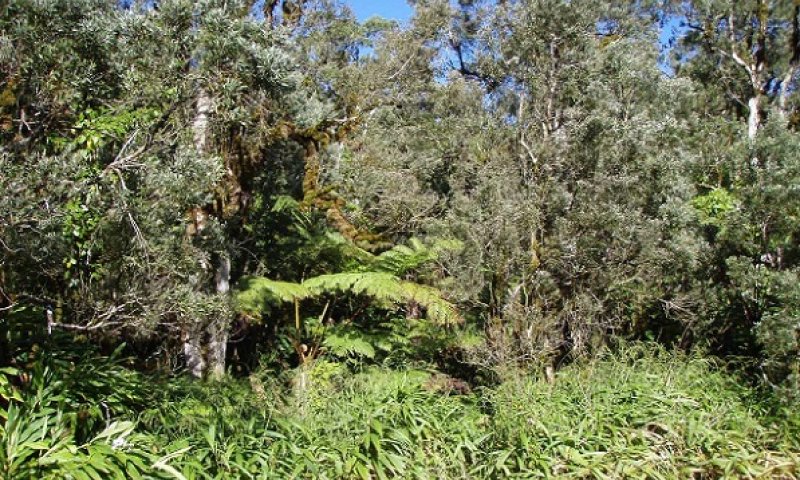
Figure 16. Melaleuca overstory with kahili ginger understory. D Clausnitzer generic photo

Figure 17. Closeup of ginger root system on soil surface. 9/11/08 D Clausnitzer generic photo

Figure 18. Hilograss dominating soil surface. 4/27/07 D Clausnitzer MU426
This community phase may have a few remnant native trees and tree ferns. Introduced species dominate all strata.
Forest overstory. A few ohia lehua (Metrosideros polymorpha) remain in the overstory. Some scattered strawberry guava (Psidium cattleianum) have grown into the overstory. Other introduced tree species such as paperbark (Melaleuca quinquinervia) sometimes occur in the overstory.
Forest understory. Kahili ginger or Kahila garland-lily (Hedychium gardnerianum) is typically the dominant species, forming a dense, uniform cover about five feet (1.5 meters) tall. Strawberry guava appears able to reproduce and emerge through the ginger stands to some extent. A few hapuu (Cibotium glaucum) remain above the ginger stands but do not reproduce. Introduced grasses and a few introduced forbs are able to reproduce and grow in gaps within the understory.
Table 11. Soil surface cover
| Tree basal cover | 0.0-0.5% |
|---|---|
| Shrub/vine/liana basal cover | 0% |
| Grass/grasslike basal cover | 0-1% |
| Forb basal cover | 35-40% |
| Non-vascular plants | 50-60% |
| Biological crusts | 0% |
| Litter | 1-10% |
| Surface fragments >0.25" and <=3" | 0% |
| Surface fragments >3" | 0% |
| Bedrock | 0% |
| Water | 0% |
| Bare ground | 3-5% |
Table 12. Woody ground cover
| Downed wood, fine-small (<0.40" diameter; 1-hour fuels) | – |
|---|---|
| Downed wood, fine-medium (0.40-0.99" diameter; 10-hour fuels) | – |
| Downed wood, fine-large (1.00-2.99" diameter; 100-hour fuels) | – |
| Downed wood, coarse-small (3.00-8.99" diameter; 1,000-hour fuels) | 0% |
| Downed wood, coarse-large (>9.00" diameter; 10,000-hour fuels) | – |
| Tree snags** (hard***) | – |
| Tree snags** (soft***) | – |
| Tree snag count** (hard***) | |
| Tree snag count** (hard***) | 0-2 per hectare |
* Decomposition Classes: N - no or little integration with the soil surface; I - partial to nearly full integration with the soil surface.
** >10.16cm diameter at 1.3716m above ground and >1.8288m height--if less diameter OR height use applicable down wood type; for pinyon and juniper, use 0.3048m above ground.
*** Hard - tree is dead with most or all of bark intact; Soft - most of bark has sloughed off.
Table 13. Canopy structure (% cover)
| Height Above Ground (m) | Tree | Shrub/Vine | Grass/ Grasslike |
Forb |
|---|---|---|---|---|
| <0.15 | 0% | – | 0% | 0% |
| >0.15 <= 0.3 | 0% | – | 3-5% | 1-1% |
| >0.3 <= 0.6 | 1-1% | – | 3-5% | 1-1% |
| >0.6 <= 1.4 | 3-5% | – | 0-1% | 75-85% |
| >1.4 <= 4 | 5-15% | – | – | 0-1% |
| >4 <= 12 | 1-5% | – | – | – |
| >12 <= 24 | – | – | – | – |
| >24 <= 37 | – | – | – | – |
| >37 | – | – | – | – |
Transition T1A
State 1 to 2
This state transitions to State 2 Invaded Understory by gradual replacement of the understory by introduced plant species that outcompete native understory species. This process is accelerated by ungulate foraging that disturbs the soil surface and directly destroys native plants and prevents their regeneration.
Restoration pathway R2A
State 2 to 1
It may be possible to restore this state to State 1 Reference. Before restoration of native plants, introduced understory plants must be eliminated by herbicide, and ungulates must be excluded from the restoration site.
Transition T2A
State 2 to 3
This state will transition to State 3 Invaded Overstory and Understory. Native species are unable to successfully regenerate due to the dense, shady weed understory. Mature native plants eventually die out and are replaced by more competitive, introduced species.
Additional community tables
Table 14. Community 1.1 forest overstory composition
| Common name | Symbol | Scientific name | Nativity | Height (m) | Canopy cover (%) | Diameter (cm) | Basal area (square m/hectare) |
|---|---|---|---|---|---|---|---|
|
Tree
|
|||||||
| 'ohi'a lehua | MEPO5 | Metrosideros polymorpha | Native | 4–6.1 | 0–1 | – | – |
| olapalapa | CHTR2 | Cheirodendron trigynum | Native | 4–6.1 | 0–1 | – | – |
| lo'ulu | PRLA4 | Pritchardia lanigera | Native | 4–6.1 | – | – | – |
Table 15. Community 1.1 forest understory composition
| Common name | Symbol | Scientific name | Nativity | Height (m) | Canopy cover (%) | |
|---|---|---|---|---|---|---|
|
Grass/grass-like (Graminoids)
|
||||||
| alpine hairgrass | DENU6 | Deschampsia nubigena | Native | 0.3–0.6 | 1–5 | |
| Polynesian twigrush | MAAN | Machaerina angustifolia | Native | 0.6–0.9 | 0.5–1 | |
| Hawai'i sedge | CAAL12 | Carex alligata | Native | 0.3–0.6 | 0.5–1 | |
| spiked beaksedge | RHCH6 | Rhynchospora chinensis | Native | 0.2–0.3 | 0–0.5 | |
| bog rosette grass | DIHI2 | Dichanthelium hillebrandianum | Native | 0.3–0.6 | – | |
| ridgetop bloodgrass | ISDI | Isachne distichophylla | Native | 0.3–0.6 | – | |
|
Forb/Herb
|
||||||
| pua'akuhinia | ASME4 | Astelia menziesiana | Native | 0.2–0.3 | 0–1 | |
| peperomia | PEPER | Peperomia | Native | 0.2–0.3 | 0.5–1 | |
| Hawai'i phyllostegia | PHFL6 | Phyllostegia floribunda | Native | 0.2–0.3 | – | |
| streambed phyllostegia | PHVE4 | Phyllostegia vestita | Native | 0.2–0.3 | – | |
| Hawai'i bog violet | VIMA6 | Viola maviensis | Native | 0.3–0.6 | – | |
| rough dubautia | DUSC | Dubautia scabra | Native | 0.2–0.3 | – | |
| makole | COGR23 | Coprosma granadensis | Native | 0.1–0.2 | – | |
|
Fern/fern ally
|
||||||
| Old World forkedfern | DILI | Dicranopteris linearis | Native | 0.3–1.2 | 1–5 | |
| sadleria | SADLE | Sadleria | Native | 0.6–0.9 | 0–1 | |
| royal tonguefern | ELCR2 | Elaphoglossum crassifolium | Native | 0.2–0.3 | 0.5–1 | |
| ekaha | ELHI3 | Elaphoglossum hirtum | Native | 0.2–0.3 | 0.5–1 | |
| akolea | ATMI | Athyrium microphyllum | Native | 0.3–0.6 | 0.5–1 | |
| spleenwort | ASPLE | Asplenium | Native | 0.3–0.6 | 0–1 | |
| wahini noho mauna | ADTA | Adenophorus tamariscinus | Native | 0.2–0.3 | 0.5–1 | |
| graceful kihifern | ADPI | Adenophorus pinnatifidus | Native | 0.2–0.3 | 0–1 | |
| alpine woodfern | DRWA | Dryopteris wallichiana | Native | 0.3–0.6 | 0–1 | |
| Hawai'i umbrella fern | STOW | Sticherus owhyensis | Native | 0.3–0.9 | 0–1 | |
| Chinese creepingfern | ODCH | Odontosoria chinensis | Native | 0.3–0.6 | 0–1 | |
| Pacific woodfern | DRSA | Dryopteris sandwicensis | Native | 0.3–0.6 | 0–1 | |
| kolokolo | GRTE | Grammitis tenella | Native | 0.1–0.2 | 0–0.5 | |
| flatfork fern | PSCO3 | Psilotum complanatum | Native | 0.2–0.3 | 0–0.5 | |
| deflexed spikemoss | SEDE4 | Selaginella deflexa | Native | 0–0.1 | 0–0.5 | |
| staghorn clubmoss | LYCE2 | Lycopodiella cernua | Native | 0.2–0.3 | 0–0.5 | |
| weeping fern | LETH6 | Lepisorus thunbergianus | Native | 0.2–0.3 | 0–0.5 | |
| robust curlygrass fern | SCRO2 | Schizaea robusta | Native | 0.1–0.2 | – | |
| scrambling fern | DIPI3 | Diplopterygium pinnatum | Native | 0.3–0.6 | – | |
| ohiaku | HYRE | Hymenophyllum recurvum | Native | 0–0.1 | – | |
|
Shrub/Subshrub
|
||||||
| ohelo kau la'au | VACA8 | Vaccinium calycinum | Native | 0.6–1.2 | 20–30 | |
| pukiawe | STTA | Styphelia tameiameiae | Native | 0.6–1.2 | 1–2 | |
| lava clermontia | CLCA5 | Clermontia calophylla | Native | 0.6–1.2 | 0.5–1 | |
| swampforest clermontia | CLWA2 | Clermontia waimeae | Native | 0.6–1.2 | 0.5–1 | |
| largeflower false lobelia | TRGR8 | Trematolobelia grandifolia | Native | 0.6–1.8 | 0–1 | |
| ohelo | VADE2 | Vaccinium dentatum | Native | 0.3–0.6 | 0–1 | |
| bog labordia | LAHE2 | Labordia hedyosmifolia | Native | 0.6–1.2 | 0–1 | |
| kanawao | BRAR6 | Broussaisia arguta | Native | 0.6–1.8 | 0–1 | |
| Maui mirrorplant | COOC3 | Coprosma ochracea | Native | 0.6–1.2 | 0–1 | |
| plantainleaf dubautia | DUPL | Dubautia plantaginea | Native | 0.6–1.8 | – | |
| anini | EUSA6 | Eurya sandwicensis | Native | 0.6–0.9 | – | |
|
Tree
|
||||||
| 'ohi'a lehua | MEPO5 | Metrosideros polymorpha | Native | 0.6–1.5 | 40–50 | |
| 'ohi'a lehua | MEPO5 | Metrosideros polymorpha | Native | 1.5–4 | 15–25 | |
| olapalapa | CHTR2 | Cheirodendron trigynum | Native | 0.6–4 | 5–10 | |
| kokea lau li'i | MYSA2 | Myrsine sandwicensis | Native | 0.6–2.4 | 3–5 | |
| melicope | MELIC3 | Melicope | Native | 0.6–2.4 | 0.5–1 | |
| kolea lau nui | MYLE2 | Myrsine lessertiana | Native | 0.6–1.5 | 0.5–1 | |
| Hawai'i holly | ILAN | Ilex anomala | Native | 0.6–1.5 | 0–1 | |
| variable starviolet | HETE21 | Hedyotis terminalis | Native | 0.6–1.5 | 0–1 | |
| Kohala Mountain clermontia | CLDR2 | Clermontia drepanomorpha | Native | 0.6–1.8 | 0–1 | |
| 'aku 'aku | CYTR6 | Cyanea tritomantha | Native | 0.6–1.5 | – | |
| lo'ulu | PRLA4 | Pritchardia lanigera | Native | 0.6–4 | – | |
|
Tree Fern
|
||||||
| hapu'u | CIGL | Cibotium glaucum | Native | 0.6–2.4 | 1–2 | |
| hapu'u li | CIME8 | Cibotium menziesii | Native | 0.6–1.8 | 0–1 | |
| Chamisso's manfern | CICH | Cibotium chamissoi | Native | 0.6–1.8 | 0–0.5 | |
|
Vine/Liana
|
||||||
| Maile | ALST11 | Alyxia stellata | Native | 0.3–0.6 | 0–1 | |
| Hawai'i greenbrier | SMME | Smilax melastomifolia | Native | 0.2–1.2 | 0–1 | |
| 'ie'ie | FRAR | Freycinetia arborea | Native | 0.3–1.8 | 0–1 | |
| bog stenogyne | STCA9 | Stenogyne calaminthoides | Native | 0.1–0.3 | 0–1 | |
| Laupahoehoe phyllostegia | PHWA3 | Phyllostegia warshaueri | Native | 0.2–0.3 | – | |
Table 16. Community 2.1 forest overstory composition
| Common name | Symbol | Scientific name | Nativity | Height (m) | Canopy cover (%) | Diameter (cm) | Basal area (square m/hectare) |
|---|---|---|---|---|---|---|---|
|
Tree
|
|||||||
| 'ohi'a lehua | MEPO5 | Metrosideros polymorpha | Native | 4–6.1 | 0–1 | – | – |
| olapalapa | CHTR2 | Cheirodendron trigynum | Native | 4–6.1 | 0–1 | – | – |
Table 17. Community 2.1 forest understory composition
| Common name | Symbol | Scientific name | Nativity | Height (m) | Canopy cover (%) | |
|---|---|---|---|---|---|---|
|
Grass/grass-like (Graminoids)
|
||||||
| hilograss | PACO14 | Paspalum conjugatum | Introduced | 0.2–0.3 | 5–10 | |
| common carpetgrass | AXFI | Axonopus fissifolius | Introduced | 0.2–0.3 | 5–10 | |
| palmgrass | SEPA6 | Setaria palmifolia | Introduced | 0.3–0.6 | 1–5 | |
| para grass | URMU | Urochloa mutica | Introduced | 0.3–0.6 | 0–1 | |
| Vasey's grass | PAUR2 | Paspalum urvillei | Introduced | 0.3–0.6 | 0–0.5 | |
| common velvetgrass | HOLA | Holcus lanatus | Introduced | 0.3–0.6 | – | |
| kikuyugrass | PECL2 | Pennisetum clandestinum | Introduced | 0.2–0.3 | – | |
| flatsedge | CYPER | Cyperus | Unknown | 0.3–0.6 | – | |
|
Forb/Herb
|
||||||
| Kahila garland-lily | HEGA | Hedychium gardnerianum | Introduced | 0.6–1.2 | 25–30 | |
| white garland-lily | HECO11 | Hedychium coronarium | Introduced | 0.6–1.2 | 5–10 | |
| herbaceous glorytree | TIHE2 | Tibouchina herbacea | Introduced | 0.3–0.9 | 1–5 | |
| dotted smartweed | POPU5 | Polygonum punctatum | Introduced | 0.3–0.6 | 3–5 | |
| climbing dayflower | CODI5 | Commelina diffusa | Introduced | 0.2–0.3 | 0–1 | |
| whorled marshpennywort | HYVE2 | Hydrocotyle verticillata | Unknown | 0.1–0.2 | 0–1 | |
|
Fern/fern ally
|
||||||
| Old World forkedfern | DILI | Dicranopteris linearis | Native | 0.9–1.2 | 0–1 | |
| golden polypody | PHAU6 | Phlebodium aureum | Introduced | 0.3–0.6 | 0–0.5 | |
| deflexed spikemoss | SEDE4 | Selaginella deflexa | Native | 0–0.1 | 0–0.5 | |
| sadleria | SADLE | Sadleria | Native | 0.6–0.9 | – | |
| royal tonguefern | ELCR2 | Elaphoglossum crassifolium | Native | 0.2–0.3 | – | |
| ekaha | ELHI3 | Elaphoglossum hirtum | Native | 0.2–0.3 | – | |
| staghorn clubmoss | LYCE2 | Lycopodiella cernua | Native | 0.1–0.2 | – | |
| wahini noho mauna | ADTA | Adenophorus tamariscinus | Native | 0.1–0.2 | – | |
| graceful kihifern | ADPI | Adenophorus pinnatifidus | Native | 0.1–0.2 | – | |
| weeping fern | LETH6 | Lepisorus thunbergianus | Native | 0.1–0.2 | – | |
| kolokolo | GRTE | Grammitis tenella | Native | 0.1–0.2 | – | |
| flatfork fern | PSCO3 | Psilotum complanatum | Native | 0.1–0.2 | – | |
| Chinese creepingfern | ODCH | Odontosoria chinensis | Native | 0.3–0.6 | – | |
|
Shrub/Subshrub
|
||||||
| ohelo kau la'au | VACA8 | Vaccinium calycinum | Native | 0.6–1.2 | 5–10 | |
| soapbush | CLHI3 | Clidemia hirta | Introduced | 0.6–1.5 | 5–10 | |
| pukiawe | STTA | Styphelia tameiameiae | Native | 0.6–1.2 | 0–1 | |
| kanawao | BRAR6 | Broussaisia arguta | Native | 0.6–1.5 | – | |
|
Tree
|
||||||
| strawberry guava | PSCA | Psidium cattleianum | Introduced | 0.6–3 | 10–20 | |
| 'ohi'a lehua | MEPO5 | Metrosideros polymorpha | Native | 0.6–4 | 10–15 | |
| olapalapa | CHTR2 | Cheirodendron trigynum | Native | 0.6–4 | 0–1 | |
| kolea lau nui | MYLE2 | Myrsine lessertiana | Native | 0.6–2.4 | 0–1 | |
|
Tree Fern
|
||||||
| hapu'u | CIGL | Cibotium glaucum | Native | 0.6–2.4 | 0–1 | |
| hapu'u li | CIME8 | Cibotium menziesii | Native | 0.6–1.8 | – | |
|
Vine/Liana
|
||||||
| 'ie'ie | FRAR | Freycinetia arborea | Native | 0.3–0.9 | – | |
Table 18. Community 3.1 forest overstory composition
| Common name | Symbol | Scientific name | Nativity | Height (m) | Canopy cover (%) | Diameter (cm) | Basal area (square m/hectare) |
|---|---|---|---|---|---|---|---|
|
Tree
|
|||||||
| 'ohi'a lehua | MEPO5 | Metrosideros polymorpha | Native | 4–6.1 | 0–5 | – | – |
| strawberry guava | PSCA | Psidium cattleianum | Introduced | 4–4.9 | 0–1 | – | – |
Table 19. Community 3.1 forest understory composition
| Common name | Symbol | Scientific name | Nativity | Height (m) | Canopy cover (%) | |
|---|---|---|---|---|---|---|
|
Grass/grass-like (Graminoids)
|
||||||
| hilograss | PACO14 | Paspalum conjugatum | Introduced | 0.2–0.3 | 3–5 | |
| common carpetgrass | AXFI | Axonopus fissifolius | Introduced | 0.2–0.3 | 3–5 | |
| para grass | URMU | Urochloa mutica | Introduced | 0.3–0.6 | 0–1 | |
| flatsedge | CYPER | Cyperus | Unknown | 0.2–0.3 | – | |
|
Forb/Herb
|
||||||
| Kahila garland-lily | HEGA | Hedychium gardnerianum | Introduced | 0.6–1.2 | 75–85 | |
| herbaceous glorytree | TIHE2 | Tibouchina herbacea | Introduced | 0.6–0.9 | 1–2 | |
| dotted smartweed | POPU5 | Polygonum punctatum | Introduced | 0.3–0.6 | 0–1 | |
|
Tree
|
||||||
| strawberry guava | PSCA | Psidium cattleianum | Introduced | 0.6–4 | 10–20 | |
| 'ohi'a lehua | MEPO5 | Metrosideros polymorpha | Native | 2.4–4 | 0–1 | |
|
Tree Fern
|
||||||
| hapu'u | CIGL | Cibotium glaucum | Native | 1.5–2.4 | – | |
Interpretations
Animal community
Native forest birds have been observed in the Reference community phase. Elepaio (Chasiempis sandwichensis), Amakihi (Hemignathus virens), Apapane (Himatione sanguinea), and Iiwi (Vestiaria coccinea) occur. Also present is the Hawaiian Hawk or Io (Buteo solitarius) (Maly and Maly 2004). Newell Shearwater, or Ao (Puffinus newelli) are seabirds that have been observed.
Non-native forest birds include Hwamei (Garrulax canorus), Japanese White-eye (Zosterops japonicus), and Northern Cardinal (Cardinalis cardinalis).
Feral pigs and cattle are abundant and are very destructive to native vegetation.
Hydrological functions
Small variations in elevation and slope produce visible variations in the vegetation and soil surface cover within this ecological site. Slightly higher, better drained locations typically have taller vegetation and less, or thinner, cover of sphagnum on the soil.
Recreational uses
Most of this ecological site is inaccessible to the public. Where access is possible, hunting and hiking may be conducted.
Wood products
None.
Other products
None.
Other information
Definitions
These definitions have been greatly simplified for brevity and do not cover every aspect of each topic.
Aa lava: A type of basaltic lava having a rough, jagged, clinkery surface and a vesicular interior.
Alluvial: Materials or processes associated with transportation and/or deposition by running water.
Aquic soil moisture regime: A regime in which the soil is free of dissolved oxygen because it is saturated by water. This regime typically exists in bogs or swamps.
Aridic soil moisture regime: A regime in which defined parts of the soil are, in normal years, dry for more than half of the growing season and moist for less than 90 consecutive days during the growing season. In Hawaii it is associated with hot, dry areas with plants such as kiawe, wiliwili, and buffelgrass. The terms aridic and torric are basically the same.
Ash field: a land area covered by a thick or distinctive deposit of volcanic ash that can be traced to a specific source and has well defined boundaries. The term “ash flow” is erroneously used in the Physiographic section of this ESD due to a flaw in the national database.
Ashy: A “soil texture modifier” for volcanic ash soils having a water content at the crop wilting point of less than 30 percent; a soil that holds relatively less water than “medial” and “hydrous” soils.
Available water capacity: The amount of soil water available to plants to the depth of the first root-restricting layer.
Basal area or basal cover: The cross sectional area of the stem or stems of a plant or of all plants in a stand.
Blue rock: The dense, hard, massive lava that forms the inner core of an aa lava flow.
Bulk density: the weight of dry soil per unit of volume. Lower bulk density indicates a greater amount of pore space that can hold water and air in a soil.
CaCO3 equivalent: The amount of free lime in a soil. Free lime exists as solid material and typically occurs in regions with a dry climate.
Canopy cover: The percentage of ground covered by the vertical projection downward of the outermost perimeter of the spread of plant foliage. Small openings within the canopy are included.
Community pathway: A description of the causes of shifts between community phases. A community pathway is reversible and is attributable to succession, natural disturbances, short-term climatic variation, and facilitating practices, such as grazing management.
Community phase: A unique assemblage of plants and associated dynamic soil properties within a state.
Dominant species: Plant species or species groups that exert considerable influence upon a community due to size, abundance, or cover.
Drainage class: The frequency and duration of a water table in a soil. There are seven drainage classes, ranging from “excessively drained” (soils with very rare or very deep water tables) to “well drained” (soils that provide ample water for plant growth but are not so wet as to inhibit root growth) to “very poorly drained” (soils with a water table at or near the surface during much of the growing season that inhibits growth of most plants).
Electrical conductivity (EC): A measure of the salinity of a soil. The standard unit is deciSiemens per meter (dS/m), which is numerically equivalent to millimhos per centimeter (mmhos/cm). An EC greater than about 4 dS/m indicates a salinity level that is unfavorable to growth of most plants.
Friability: A soil consistency term pertaining to the ease of crumbling of soils.
Hydrous: A “soil texture modifier” for volcanic ash soils having a water content at the crop wilting point of 100 percent or more; a soil that holds more water than “medial” or “ashy” soils.
Ion exchange capacity: The ability of soil materials such as clay or organic matter to retain ions (which may be plant nutrients) and to release those ions for uptake by roots.
Isohyperthermic soil temperature regime: A regime in which mean annual soil temperature is 72 degrees F (22 degrees C) or higher and mean summer and mean winter soil temperatures differ by less than 11 degrees F (6 degrees C) at a specified depth.
Isomesic soil temperature regime: A regime in which mean annual soil temperature is 47 degrees F (8 degrees C) or higher but lower than 59 degrees F (15 degrees C) and mean summer and mean winter soil temperatures differ by less than 11 degrees F (6 degrees C) at a specified depth.
Isothermic soil temperature regime: A regime in which mean annual soil temperature is 59 degrees F (15 degrees C) or higher but lower than 72 degrees F (22 degrees C) and mean summer and mean winter soil temperatures differ by less than 11 degrees F (6 degrees C) at a specified depth.
Kipuka: An area of land surrounded by younger (more recent) lava. Soils and plant communities within a kipuka are older than, and often quite different from, those on the surrounding surfaces.
Major Land Resource Area (MLRA): A geographic area defined by NRCS that is characterized by a particular pattern of soils, climate, water resources, and land uses. The island of Hawaii contains nine MLRAs, some of which also occur on other islands in the state.
Makai: a Hawaiian word meaning “toward the sea.”
Mauka: a Hawaiian word meaning “toward the mountain” or “inland.”
Medial: A “soil texture modifier” for volcanic ash soils having a water content at the crop wilting point of 30 to 100 percent; a soil that holds an amount of water intermediate to “hydrous” or “ashy” soils.
Naturalized plant community: A community dominated by adapted, introduced species. It is a relatively stable community resulting from secondary succession after disturbance. Most grasslands in Hawaii are in this category.
Pahoehoe lava: A type of basaltic lava with a smooth, billowy, or rope-like surface and vesicular interior.
Parent material: Unconsolidated and chemically weathered material from which a soil is developed.
Perudic soil moisture regime: A very wet regime found where precipitation exceeds evapotranspiration in all months of normal years. On the island of Hawaii, this regime is found on top of Kohala and on parts of the windward side of Mauna Kea.
pH: The numerical expression of the relative acidity or alkalinity of a soil sample. A pH of 7 is neutral; a pH below 7 is acidic and a pH above 7 is basic.
Phosphorus adsorption: The ability of soil materials to tightly retain phosphorous ions, which are a plant nutrient. Some volcanic ash soils retain phosphorus so strongly that it is partly unavailable to plants.
Reference community phase: The phase exhibiting the characteristics of the reference state and containing the full complement of plant species that historically occupied the site. It is the community phase used to classify an ecological site.
Reference state: A state that describes the ecological potential and natural or historical range of variability of an ecological site.
Restoration pathway: A term describing the environmental conditions and practices that are required to recover a state that has undergone a transition.
Sodium adsorption ratio (SAR): A measure of the amount of dissolved sodium relative to calcium and magnesium in the soil water. SAR values higher than 13 create soil conditions unfavorable to most plants.
Soil moisture regime: A term referring to the presence or absence either of ground water or of water held at a tension of less than 1500 kPa (the crop wilting point) in the soil or in specific horizons during periods of the year.
Soil temperature regime: A defined class based on mean annual soil temperature and on differences between summer and winter temperatures at a specified depth.
Soil reaction: Numerical expression in pH units of the relative acidity or alkalinity or a soil.
State: One or more community phases and their soil properties that interact with the abiotic and biotic environment to produce persistent functional and structural attributes associated with a characteristic range of variability.
State-and-transition model: A method used to display information about relationships between vegetation, soil, animals, hydrology, disturbances, and management actions on an ecological site.
Torric soil moisture regime: See Aridic soil moisture regime.
Transition: A term describing the biotic or abiotic variables or events that contribute to loss of state resilience and result in shifts between states.
Udic soil moisture regime: A regime in which the soil is not dry in any part for as long as 90 cumulative days in normal years, and so provides ample moisture for plants. In Hawaii it is associated with forests in which hapuu (tree ferns) are usually moderately to highly abundant.
Ustic soil moisture regime: A regime in which moisture is limited but present at a time when conditions are suitable for plant growth. In Hawaii it usually is associated with dry forests and subalpine shrublands.
Supporting information
Type locality
| Location 1: Hawaii County, HI | |
|---|---|
| Latitude | 20° 4′ 4″ |
| Longitude | 155° 40′ 14″ |
| General legal description | In Kohala State Forest Reserve, up Reservoir Road above Waimea. Drive almost to end of road at head of Waipio Valley. Walk W and then S for 200 yards along cleared foot trail. |
Other references
Armstrong RW. 1973. Atlas of Hawaii. University of Hawaii Press, Honolulu.
Athens JS. Ch. 12 Hawaiian Native Lowland Vegetation in Prehistory in Historical Ecology in the Pacific Islands – Prehistoric Environmental and Landscape Change. Kirch PV and TL Hunt, eds. 1997. Yale U. Press, New Haven.
Burney DA, HF James, LP Burney, SL Olson, W Kikuchi, WL Wagner, M Burney, D McCloskey, D Kikuchi, FV Grady, R Gage II, and R Nishek. 2001. Fossil evidence for a diverse biota from Kauai and its transformation since human arrival. Ecological Monographs 71:615-641.
Craighill ES and EG Handy. 1991. Native Planters in Old Hawaii – Their Life, Lore, and Environment. Bernice P. Bishop Museum Bulletin 233, Bishop Museum Press, Honolulu, HI
Cuddihy LW and CP Stone. 1990. Alteration of Native Hawaiian Vegetation: Effects of Humans, Their Activities and Introductions. Honolulu: University of Hawaii Cooperative National Park Resources Study Unit.
Hazlett RW and DW Hyndman. 1996. Roadside Geology of Hawaii. Mountain Press Publishing Company, Missoula MT.
Henke LA. 1929. A Survey of Livestock in Hawaii. Research Publication No. 5. University of Hawaii, Honolulu.
Jacobi JD. 1989. Vegetation Maps of the Upland Plant Communities on the Islands of Hawaii, Maui, Molokai, and Lanai. Technical Report 68. Cooperative National Park Resources Studies Unit, University of Hawaii at Manoa and National Park Service.
Kirch PV. 1982. The impact of the prehistoric Polynesians in the Hawaiian ecosystem. Pacific Science 36(1):1-14.
Kirch PV. 1985. Feathered Gods and Fishhooks: An Introduction to Hawaiian Archaeology and Prehistory. Honolulu: University of Hawaii Press.
Kirch PV. 2000. On the Road of the Winds: An Archaeological History of the Pacific Islands Before European Contact. Berkeley: University of California Press.
Little EL Jr. and RG Skolmen. 1989. Common Forest Trees of Hawaii (Native and Introduced). US Department of Agriculture-US Forest Service Agriculture Handbook No. 679. (out of print). Available at www.fs.fed.us/psw/publications/documents/misc/ah679.pdf
Maly K and O Maly. 2004. He Moolelo Aina: A Cultural Study of the Puu O Umi Natural Area Reserve and Kohala-Hamakua Mountain Lands, Districts of Kohala and Hamakua, Island of Hawaii. Kumu Pono Associates, Hilo HI.
Mueller-Dombois D and FR Fosberg. 1998. Vegetation of the Tropical Pacific Islands. Springer-Verlag New York, Inc.
Palmer DD. 2003. Hawaii's Ferns and Fern Allies. University of Hawaii Press, Honolulu.
Pratt H.D. 1998. A Pocket Guide to Hawaii’s Trees and Shrubs. Mutual Publishing, Honolulu.
Ripperton JC and EY Hosaka. 1942. Vegetation zones of Hawaii. Hawaii Agricultural Experiment Station Bulletin 89:1-60.
Rock JF. The Indigenous Trees of the Hawaiian Islands. 1st edition 1913, reprinted 1974, Charles E. Tuttle Company, Rutland, VT and Tokyo, Japan.
Shoji SD, M Nanzyo, and R Dahlgren. 1993. Volcanic Ash Soils: Genesis, Properties and Utilization. Elsevier, New York.
Sohmer SH. and R Gustafson. 2000. Plants and Flowers of Hawaii. University of Hawaii Press, Honolulu.
Steadman DW. 1995. Prehistoric extinctions of Pacific island birds: biodiversity meets zooarchaeology. Science 267:1123-1131.
USDA-NRCS-PIA T&E Species GIS files. Not publicly available.
USDI-USGS. 2006. A GAP Analysis of Hawaii. Final Report and Data.
Vitousek P. 2004. Nutrient Cycling and Limitation: Hawaii as a Model Ecosystem. Princeton University Press, Princeton and Oxford.
Wagner WL, DR Herbst, and SH Sohmer. 1999. Manual of the Flowering Plants of Hawaii, Revised Edition. Bishop Museum Press, Honolulu.
Whistler WA. 1995. Wayside Plants of the Islands: a Guide to the Lowland Flora of the Pacific Islands. Isle Botanica, Honolulu.
Contributors
Dr. David Clausnitzer
Loretta Metz
Joseph May
Acknowledgments
Assistance, advice, review, and/or insights:
Mick Castillo
Michael Constantinides, NRCS-PIA
Susan Cordell, USFS
Gordon Cran, Kapapala Ranch
David Leonard, volunteer
JB Friday, UH Forestry Extension
Rick Gordon
Basil Hansen, The Nature Conservancy
Jennifer Higashino, USFWS and NRCS
Flint Hughes, USFS
Chris Jasper, NRCS Soil Survey
Mel Johansen, The Nature Conservancy
Kathy Kawakami, US Army Pohakuloa Training Ground
Rhonda Loh, Volcanoes National Park
Kamehameha Schools/Bishop Estate
Miles Nakahara, Hawaii DOFAW
Laura Nelson, The Nature Conservancy and NRCS
Patrick Niemeyer, NRCS Soil Survey
Billy Paris, rancher
John Pipan
Jon Price, USGS
John Replogle, The Nature Conservancy
Paul Scowcroft, USFS
Earl Spence, grazing consultant
Jim Thain
Mike Tomich
Quentin Tomich
Tim Tunison, Volcanoes National Park
Jill Wagner, consultant, Future Forests
Rick Warschauer
Rangeland health reference sheet
Interpreting Indicators of Rangeland Health is a qualitative assessment protocol used to determine ecosystem condition based on benchmark characteristics described in the Reference Sheet. A suite of 17 (or more) indicators are typically considered in an assessment. The ecological site(s) representative of an assessment location must be known prior to applying the protocol and must be verified based on soils and climate. Current plant community cannot be used to identify the ecological site.
| Author(s)/participant(s) | |
|---|---|
| Contact for lead author | |
| Date | |
| Approved by | |
| Approval date | |
| Composition (Indicators 10 and 12) based on | Annual Production |
Indicators
-
Number and extent of rills:
-
Presence of water flow patterns:
-
Number and height of erosional pedestals or terracettes:
-
Bare ground from Ecological Site Description or other studies (rock, litter, lichen, moss, plant canopy are not bare ground):
-
Number of gullies and erosion associated with gullies:
-
Extent of wind scoured, blowouts and/or depositional areas:
-
Amount of litter movement (describe size and distance expected to travel):
-
Soil surface (top few mm) resistance to erosion (stability values are averages - most sites will show a range of values):
-
Soil surface structure and SOM content (include type of structure and A-horizon color and thickness):
-
Effect of community phase composition (relative proportion of different functional groups) and spatial distribution on infiltration and runoff:
-
Presence and thickness of compaction layer (usually none; describe soil profile features which may be mistaken for compaction on this site):
-
Functional/Structural Groups (list in order of descending dominance by above-ground annual-production or live foliar cover using symbols: >>, >, = to indicate much greater than, greater than, and equal to):
Dominant:
Sub-dominant:
Other:
Additional:
-
Amount of plant mortality and decadence (include which functional groups are expected to show mortality or decadence):
-
Average percent litter cover (%) and depth ( in):
-
Expected annual annual-production (this is TOTAL above-ground annual-production, not just forage annual-production):
-
Potential invasive (including noxious) species (native and non-native). List species which BOTH characterize degraded states and have the potential to become a dominant or co-dominant species on the ecological site if their future establishment and growth is not actively controlled by management interventions. Species that become dominant for only one to several years (e.g., short-term response to drought or wildfire) are not invasive plants. Note that unlike other indicators, we are describing what is NOT expected in the reference state for the ecological site:
-
Perennial plant reproductive capability:
Print Options
Sections
Font
Other
The Ecosystem Dynamics Interpretive Tool is an information system framework developed by the USDA-ARS Jornada Experimental Range, USDA Natural Resources Conservation Service, and New Mexico State University.
Click on box and path labels to scroll to the respective text.